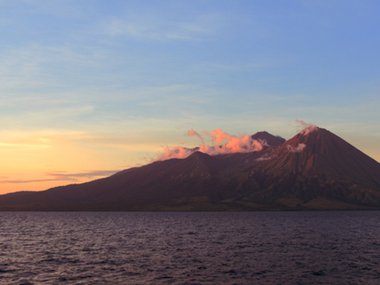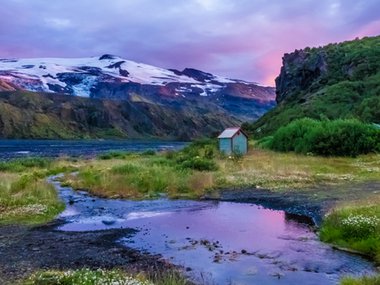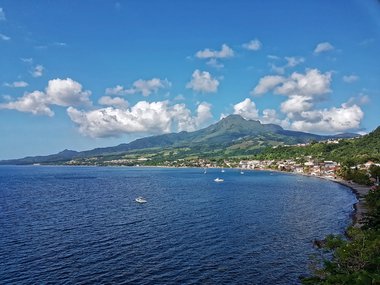Volcano: Mt. St. Helens
The explosive eruption of Mount St. Helens on May 18, 1980 is etched into the memory of anyone who was alive to experience it. The explosive eruption blew over 1,300 feet off the volcano’s summit, triggered the largest landslide in recorded history, and devastated the surrounding landscape - including claiming the lives of 57 people.
Mount St. Helens is less than 40,000 years old, a relatively young volcano geologically speaking, but it has made its presence known as the most active volcano in the Cascades Range - and that’s saying something, since the Cascades Range is home to nearly 20 active volcanoes, and 13 of them have erupted in the last 4,000 years.
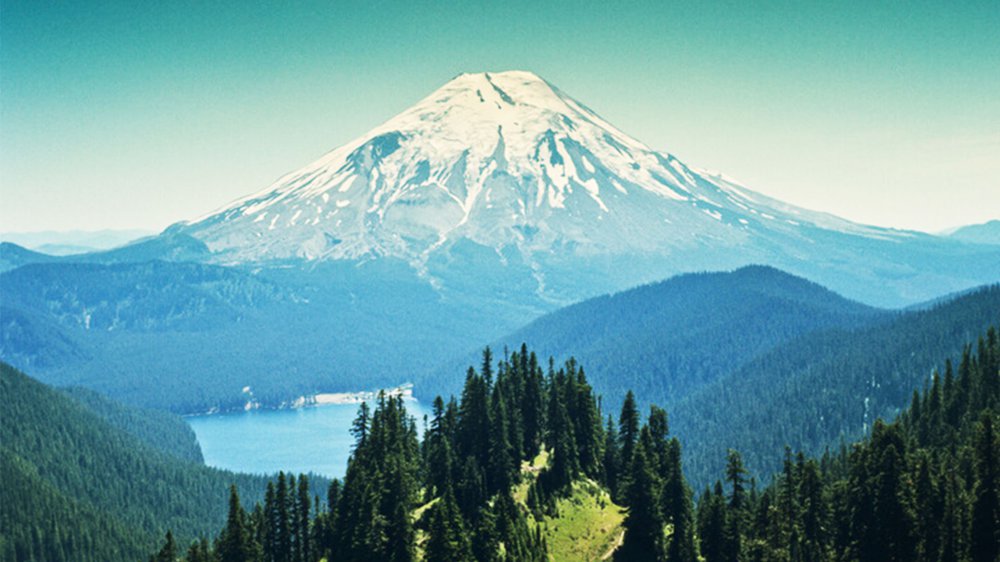
Image credit: Getty Images
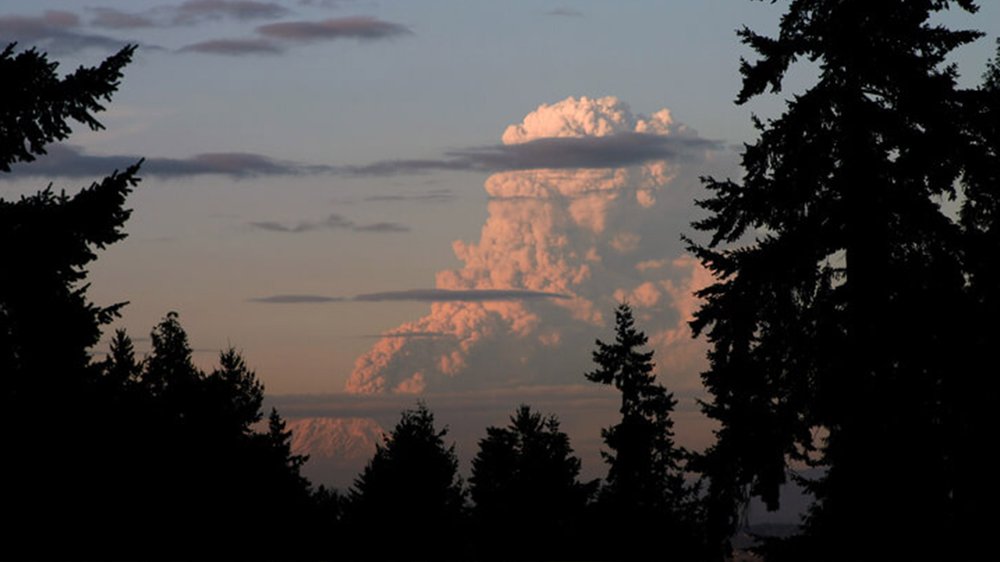
The history of Mount St. Helens is a tale of superlatives, especially when we investigate the 1980 eruption. Here is a timeline of the major events before, during and after that memorable event.
- March 16 – Activity begins with small earthquakes, followed by hundreds more for over a week.
- March 27 – Steam explosion blasts a crater through the summit’s ice cap.
- Less than 1 week later – The crater has expanded and two large cracks appear on the summit.
- May 17 – There have now been over 10,000 earthquakes. The north flank has a 450-ft bulge, evidence of magma moving upward through the volcano.
- May 18 – At 8:32 am, a 5.1 magnitude earthquake shakes the mountain.
- The bulge and summit slide down the slope as an avalanche, becoming the largest landslide in recorded history.
- As a result, the magma has now depressurized. Powerful explosions blast rocks, ash, gas and steam up high into the air and off to the north.
- Hot material from the northward blast rockets down the slope at 300 mph, overtaking the debris avalanche. Several people escape by driving away at over 65 - 100 mph!
- In less than 15 minutes, the eruption cloud reaches a height of 15 miles.
- Less than an hour later, magma explodes from the crater and a second eruption cloud appears. Just after noon, swift avalanches of pyroclastic flow (hot ash, pumice and gas) speed down the mountain at 50 to 80 mph, spreading 5 miles north.
- Scientists estimate the eruption reached its peak between 3 pm and 5 pm. Prevailing winds have blown 520 million tons of ash eastward, causing total darkness in Spokane, 250 miles away.
- The blasts of hot ash and gas have melted snow and ice at the summit, creating surges of water. The water mixes with debris, creating huge mudflows known as lahars. Several lahars rush down the mountain, ripping up trees and destroying bridges and roads. The largest lahar destroys numerous bridges and homes, eventually flowing into the Cowlitz River. It reaches maximum size around midnight, 50 miles from the volcano.
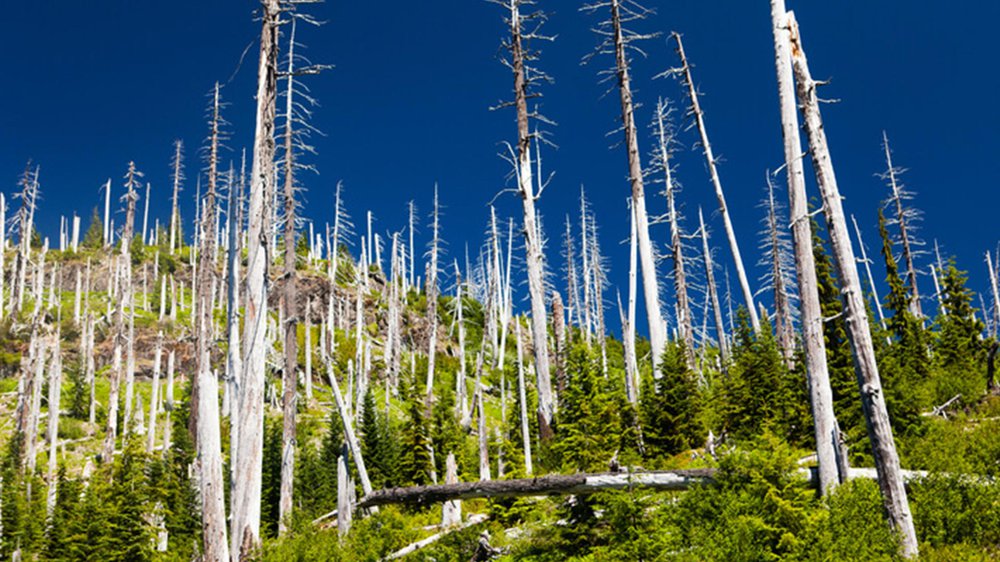
Image credit: Getty Images
- Damage tallies from the event include the total destruction of:
- 27 bridges
- 200 homes
- 4 billion board feet of timber (enough for 300,000 2-bedroom homes)
- Columbia River channel width was reduced from 40’ to 14’, stranding 31 ships upriver
- Ash covers 22,000 square miles; crosses US in 3 days; circles the Earth in 15 days
- Fatalities from the event include:
- 57 humans
- 7,000 big game animals
- 12 million juvenile salmon
Mount St. Helens continued to erupt for six years, although not as violently. Between May and October 1980, there were five smaller explosions and 17 more over the next six years. Between 1986 and 1999, 30 bursts of seismic activity and several explosions produced a new vent on the north flank. Given its history, Mount St. Helens is likely to erupt again, but when is not known exactly. For now, the flora and fauna on the mountain and in the surrounding area continue their miraculous recovery.
Love volcanoes? Learn more about volcanoes' awesome power of creation in Volcanoes: The Fires of Creation now showing in the Dome.
